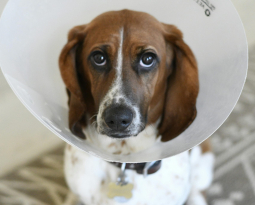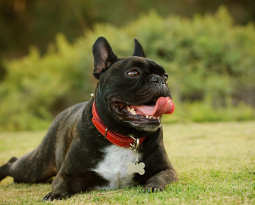Did your dog used to gobble up their food the minute you set down the bowl but has suddenly lost interest? Or maybe, they have been finicky since they were a puppy and tend to get bored with regular kibble. While there are many reasons why your dog might have lost their appetite, sudden changes in appetite could signal a greater health problem that would need to be checked out by your local veterinarian. If you find that your dog is just going through a phase and being a bit stubborn, try out these tips and tricks to help rekindle their appetite.
Create a Strict Feeding Schedule
The first thing that you probably will want to try, before switching up food brands, is creating a strict feeding schedule. The goal here is to help your dog understand that no other options exist. Try leaving their food out for at least a half an hour. If you find that your dog is more of a grazer this method could help you make sure they are finishing the meal. If your dog hasn’t eaten their food within that time frame, take it away and try setting it out again for their next meal.
Try to resist giving out treats in between meals. Your dog isn’t starving, just being picky. If your dog learns that they only get fed at certain times they will likely begin eating again and you can quickly correct the behavior.
Change it Up
Like humans, some dogs don’t want to eat the same meal every day and crave variety. These canines are classified as the foodies of the dog world. If you find that your dog isn’t thrilled with their kibble anymore you can try switching up the brand. This might be enough of a change to get your dog back to eating their recommended serving size. When changing up your dog’s kibble brand, it is important to do so gradually and systematically. You might want to begin by substituting a bit of the old kibble with the new. If your dog seems to tolerate this well, you can slowly start adding more of the new kibble each meal.
It may take a significant period of time for your dog to get used to the new food, so give them a few months to adjust before you try a different brand or type of dog food. You can also try adding a little bit of warm water to change the consistency of their food.
If you don’t want to switch the brand of dog food, try changing how you serve their meals. This can be done by changing the feeding location, the time of day they get their meals, or the dog dish. For some dogs, the texture of kibble is a bit off putting.
If you find that your dog is having difficulty swallowing or chewing, be sure to visit your local vet, as they might have problems with their teeth.
Meal Toppers
If you find that your dog just isn’t all that impressed with kibble, try adding meal toppers to their bowl. You will likely be able to find all that you need at your local pet store, as many kibble brands also make wet food toppers. Powdered toppers come in many different flavors (red meat recipe, chicken recipe, fish recipe, and peanut butter recipe) and can easily be sprinkled over kibble to entice your dog to finish their meal.
If your dog isn’t too keen on powdered toppers, try adding a bit of salmon oil (made specifically for dogs) to their food. Salmon oil has many benefits, such as supporting heart health, giving them a shiner coat, and can help with joint pain. Make sure to store it in a cool, dark place such as a pantry as air oxidation can occur when exposed to light. Also, make sure to follow the daily dosage recommendation provided by the manufacturer. If you decide to give salmon oil a try to gradually introduce it to their diet as it can potentially cause loose stool and diarrhea.
If your dog is a particularly picky eater when it comes to kibble it may be beneficial to add a multivitamin to their diet. This will help ensure that they are receiving all of the nutrient requirements they need to thrive. When deciding whether or not to add a vitamin supplement to your dog’s diet, make sure to consult your vet to see if the addition of a multivitamin to their diet is necessary. If your dog is already taking a multivitamin or you have decided to add one, consider crushing it up and sprinkling it over their food. Many dogs love the taste of these supplements and it can encourage them to finish their meal.
Try Exercising Before Meal Time
It is common knowledge that exercising helps increase an appetite. Like humans, regular exercise can also help increase your dog’s appetite.
If you have a picky eater, you may find that they tend to be less finicky about their food after a walk, run, or swim in the pool. Exercise makes a dog hungry. And, a hungry dog is much less likely to be picky about their food.
An easy way to increase your dog’s appetite is by taking them on a nice walk in the morning or after you have gotten home from work. If you can’t carve time out of your day to walk for an extended period of time, try playing fetch outside with your dog, or having a tug of war match with them inside.
When deciding on what activity to do with your pet, the end goal is to tire them out and increase their appetite. What activity you partake in is completely up to you.
Food For Thought
There may be a number of factors associated with your dog’s picky eating habits. It could simply be boredom or a potentially more serious medical condition. If your dog seems to be disinterested in their food, it is best to consult your vet to rule out any underlying health conditions. From there, your veterinarian might be able to help you get to the root of the problem. If you find that your dog is just picky, follow our tips and tricks to get your picky eater loving their food in no time.







